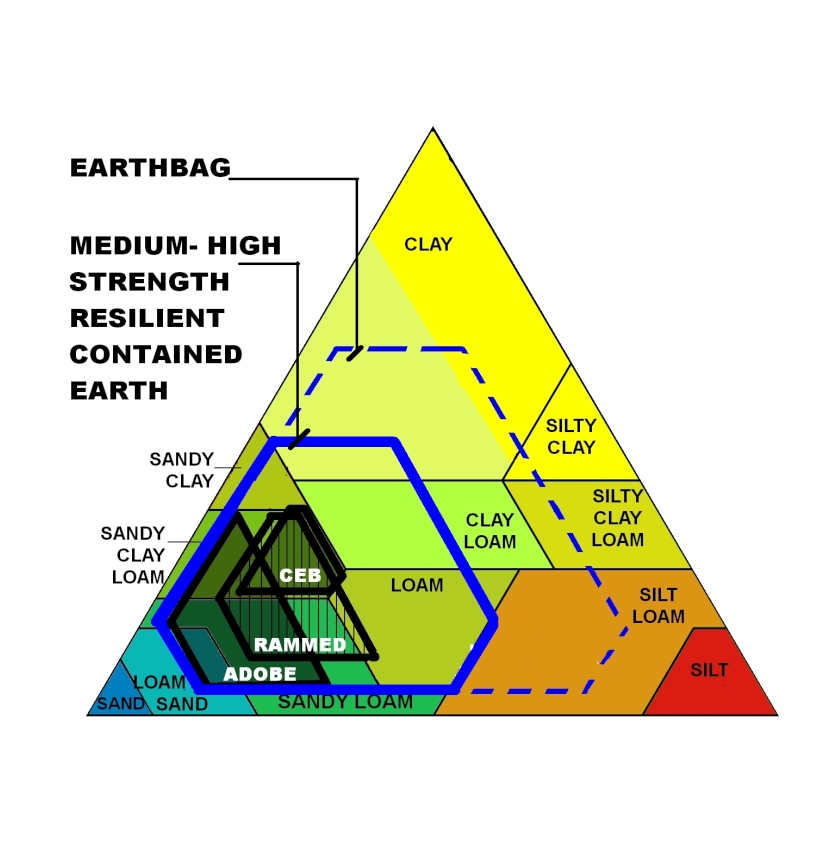
5053127163

Soils for different types of earthen walls
All soil is made of different proportions of microscopic clay particles, round silt particles (like flour), and larger grains of sand. The top of the triangle is soil of only clay, the bottom right would be a soil of only silt.
Good blends of all three kinds of particles makes stronger soil. The soils in the center of the triangle have some of everything.
Soil that contains a lot of a very strong type of clay is likely to shrink when dried. Shrinking 5% or more can cause problems. If your soil is a clay that feels smooth between your fingers, test for shrinkage.
You don't discover strength of dried soil from:
The soil color
How sticky it is
The name of the soil type
How much clay it contains